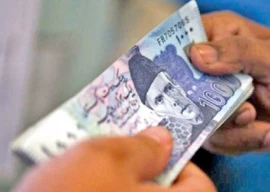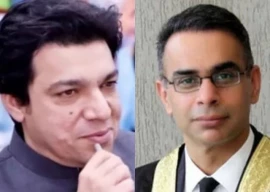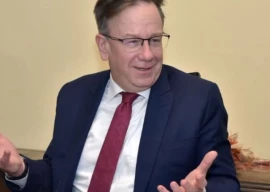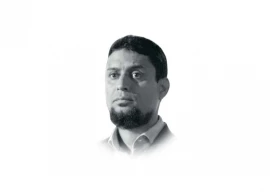1701357345-0/COP28-(2)1701357345-0.jpeg)
COP28 climate talks have ended with so much discussion and debate and have some useful conclusions. But it all requires finance. Things do not work out by just words.
I wish if the financial zeal to allocate and spend money had been as strong as the discussion has been. Unfortunately, this has not been the case. It is hoped that it will be there in future. We will take stock of the situation in the following.
It would be useful here to first summarise the major conclusions and determinations of COP28. These are the following: transition away from fossil fuels, triple the renewable energy installation and double the rate of increase of energy-efficient improvements, Loss and Damage Fund, global goal on adaptation, global cooling pledge, triple nuclear energy by 2050, acceleration of coal transition, CHAMP initiative, and climate finance.
In 2010, developed countries made a pledge to provide $100 billion per year in climate finance. Oxfam has made following comments on climate finance provided up to now. “Developed countries report they have provided just $83.3 billion of their committed $100 billion of annual climate finance. Only $21 to $24.5 billion of this could be considered real support. 2. The net financial value of reported climate finance to developing countries – the grant equivalent – may be less than half of what is reported by developed countries. 3. Due to overestimating the climate relevance of reported funds, bilateral climate finance may have been up to 30% lower than reported. 4. Just one quarter of the reported public climate finance is provided as grant. The remainder is mostly loans, the majority of which are not even concessional (they do not represent a better deal than can be obtained on the market). 5. Only 33% of the reported public climate finance was for adaptation, while 59% was for mitigation.”
Loss and Damage Fund
Perhaps, the most important action taken by COP28 is about the Loss and Damage Fund. It was approved in COP27 held in Sharm el-Sheikh, Egypt. It has been operationalised now in COP28.
There are unavoidable consequences caused by climate change like the rising sea level, prolonged heat waves, desertification, crop failure, etc. It is now known and accepted that emissions cause climate change.
Bulk of the emissions (75%) has been caused by the developed countries and damages are occurring to the developing countries. For example, Pakistan has suffered from flood damages, causing losses of $30 billion while Pakistan’s emissions are less than 1% of the global emissions. Similar is the case of the African continent as a whole.
Thus, some compensation should come from the developed countries that have caused the damage and should go to the countries which have been damaged and will continue to be damaged unless and until emissions are controlled.
The funding actually made available has been up to five times lesser than the need. By the year 2030, $300 billion would be required.
How to provide such compensatory funds? Many proposals have been made. The Loss and Damage Fund is meant to finance such needs. UN Secretary General Antonio Guterres has proposed taxes on windfall profits made by oil companies.
An amount of $700 million has been agreed towards financing the Loss and Damage Fund, which has been estimated to be less than 0.2% of the need. Of the total, $100 million has been pledged by the UAE, the US – the biggest greenhouse gas emitter – has committed only $17.5 million, Japan $10 million, Denmark, a small country comparatively, has offered $50 million and Norway $25 million. The figures do not add up. There may be other countries but the data on their grants is not available. It is not certain that even this meagre funding may come through.
Read COP28: a non-binding agreement but nevertheless a deal
Some existing funding programmes are reworded and the net funding effect becomes zero in such cases. In some cases, financing conditions are made too difficult. It is hoped that the GST committee will be able to make effective rules in this respect.
Fossil fuels are the largest contributors to global climate change, accounting for over 75% of global greenhouse gas emissions. Most of it (80%) comes out of the developed world. Thus, developed countries have to put their house in order, while pressurising developing countries and tending to demand unaffordable actions on a fast track.
Although most developing countries would need external finance, it would be more helpful to make them self-supporting. Technical assistance and technology transfer would be more effective and feasible.
However, technology is available with companies and not with governments or inter-governmental bodies. Hence, a programme to fund technical assistance may be included in such funding programmes. It would be most effective and would be faster.
It has been learnt that the World Bank is being given the responsibility of managing the Loss and Damage Fund. Many people at COP28 have expressed scepticism about the World Bank’s ability to successfully manage the fund in light of its management of Green Funds earlier.
They say the World Bank is slow and expensive. Although the World Bank has developed ability to understand the developing countries’ conditions and matching programmes accordingly, it is considered too bureaucratic while employing expensive manpower.
A 20% service charge (of the project cost) is considered too high. It is indeed high. Perhaps, a competitive approach among international organisations may be considered, it is argued.
Also, such a big financing requirement cannot be simply grant-funded. Only those programmes which do not bring cash income may be considered for grant income. Others should be interest-free or of low interest wherein cash income accrue.
Also, the role of intermediary companies should be reduced. It is alleged that in carbon market projects, intermediaries eat up most of the funding. If the world has to be changed on such a massive scale and so fast in a short time period, traditional working methods would have to be changed.
The writer is former member energy, Planning Commission and has authored several books on the energy sector
Published in The Express Tribune, December 25th, 2023.
Like Business on Facebook, follow @TribuneBiz on Twitter to stay informed and join in the conversation.

























1702312115-1/COP28-UAE-(1)1702312115-1-270x192.webp)











COMMENTS
Comments are moderated and generally will be posted if they are on-topic and not abusive.
For more information, please see our Comments FAQ